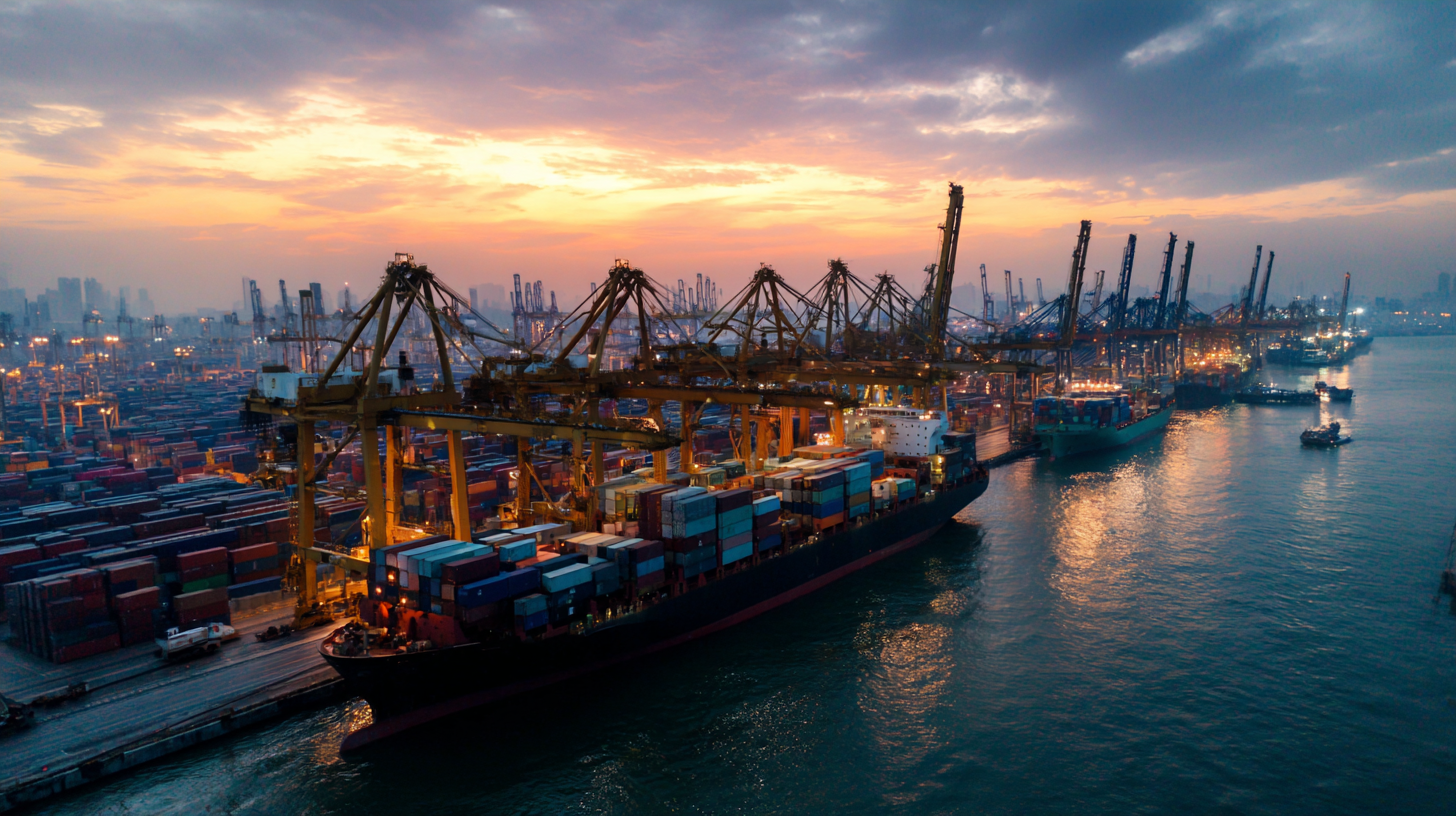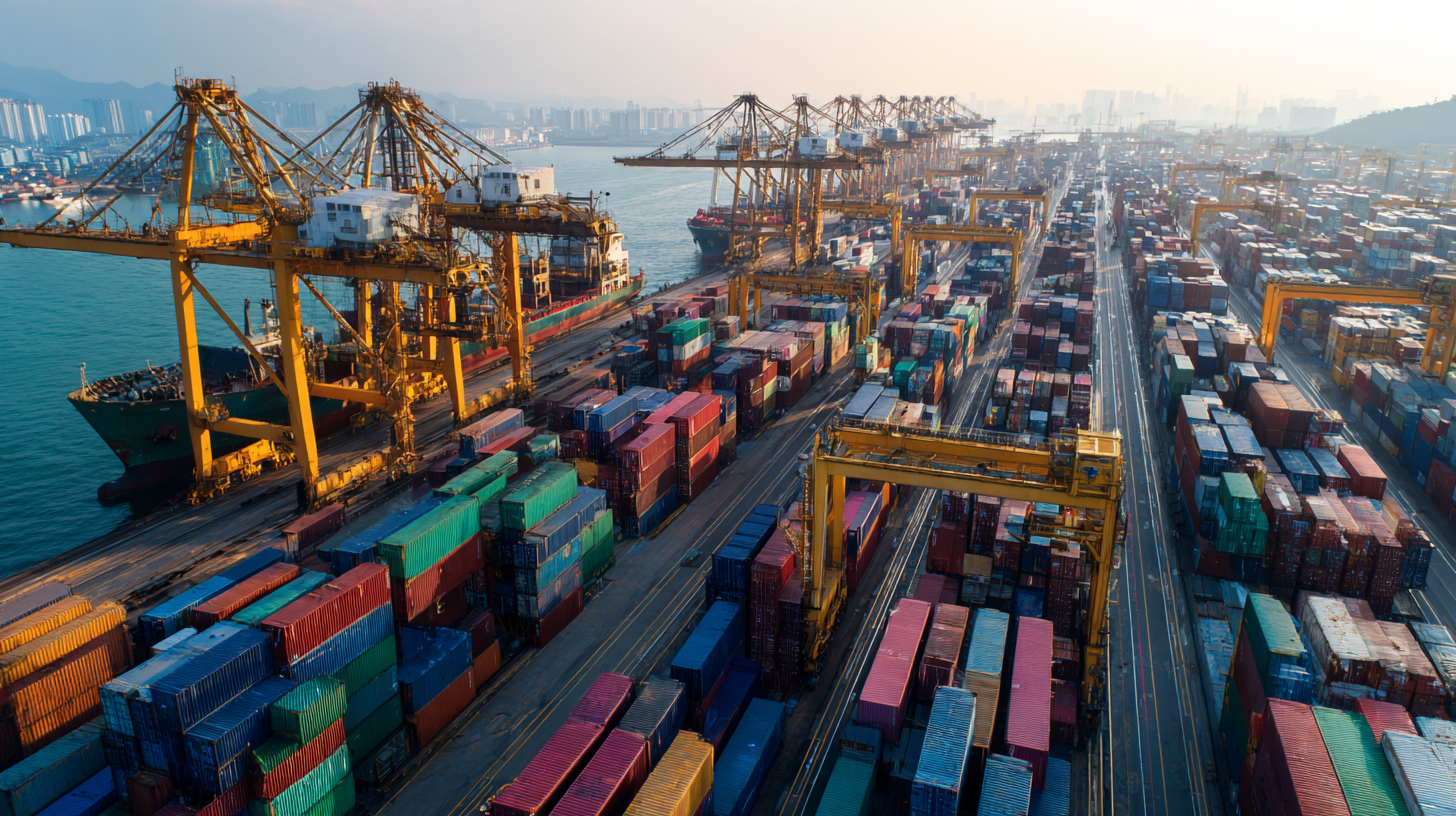
 In the ever-evolving landscape of global trade, the importance of navigating
import-export certifications
cannot be overstated, especially for manufacturers looking to thrive in this competitive marketplace.
As businesses strive to meet international standards and regulations, understanding how to find and
collaborate with quality suppliers becomes crucial. This comprehensive tutorial aims to
guide manufacturers through the complexities of import-export certifications while offering valuable insights
into identifying reputable suppliers.
By leveraging effective strategies and exploring best practices, manufacturers can optimize their supply chain,
ensure compliance with trade regulations, and ultimately enhance their operational efficiency.
Whether you are a seasoned player or new to the global trading arena, this guide will empower you with the knowledge
needed to navigate the intricate world of import-export certifications successfully.
In the ever-evolving landscape of global trade, the importance of navigating
import-export certifications
cannot be overstated, especially for manufacturers looking to thrive in this competitive marketplace.
As businesses strive to meet international standards and regulations, understanding how to find and
collaborate with quality suppliers becomes crucial. This comprehensive tutorial aims to
guide manufacturers through the complexities of import-export certifications while offering valuable insights
into identifying reputable suppliers.
By leveraging effective strategies and exploring best practices, manufacturers can optimize their supply chain,
ensure compliance with trade regulations, and ultimately enhance their operational efficiency.
Whether you are a seasoned player or new to the global trading arena, this guide will empower you with the knowledge
needed to navigate the intricate world of import-export certifications successfully.
Navigating the complexities of import-export certifications is vital for global manufacturers aiming to thrive in today's competitive landscape. As Vietnam emerges as a leading manufacturing hub, fueled by the China+1 strategy, understanding necessary certifications becomes increasingly important. Key import-export certifications such as ISO, CE marking, and product safety standards ensure that manufacturers meet international quality and safety requirements, facilitating smoother market access.
**Tips: Ensure you stay updated on the latest regulations relevant to your industry. Regularly reviewing certification standards will not only help maintain compliance but also enhance your brand's reputation in foreign markets.**
Additionally, the surge in Vietnam's trade activities—marked by a substantial growth in import-export turnover—highlights the need for manufacturers to adopt proper certification processes. This will not only aid in accessing lucrative markets but also in aligning with global demands, such as the increasing interest in Halal certifications for Middle East exports.
**Tips: Consider forming partnerships with local certification agencies to streamline procedures and gain insights into regional trade practices. Collaborating with experts can help navigate complex requirements more efficiently.**
| Certification Name | Issuing Authority | Purpose | Region Validity | Renewal Period |
|---|---|---|---|---|
| ISO 9001 | International Organization for Standardization | Quality Management Systems | Global | 3 years |
| CE Marking | European Commission | Product Safety | European Union | Not required |
| FDA Approval | U.S. Food and Drug Administration | Food and Drug Safety | United States | Not specified |
| RoHS | European Union | Restriction of Hazardous Substances | European Union | Not specified |
| C-TPAT | U.S. Customs and Border Protection | Supply Chain Security | United States | Annual |
Understanding regional trade agreements (RTAs) is crucial for manufacturers engaged in global trade, as these agreements significantly influence import-export certifications. According to a 2022 report by the International Trade Centre, over 300 regional trade agreements are currently in force, affecting tariffs, trade barriers, and certification processes across different markets. Manufacturers must be aware of these agreements to ensure compliance with both domestic and international certification requirements, which can vary widely based on regional regulations and standards.
Tip: Regularly monitor updates on RTAs applicable to your industry. Government trade websites often provide valuable resources to understand how changes in trade agreements can alter certification needs.

Moreover, manufacturers can leverage RTAs to enhance their competitive edge. A study by the World Trade Organization indicated that firms operating within RTA frameworks experience a 15% faster clearance time at customs. By aligning their certification processes with RTA stipulations, businesses can reduce delays and streamline their import-export operations, ultimately improving market access.
Tip: Engage with a trade compliance expert to navigate the complexities of certification in relation to regional agreements, ensuring your business remains compliant and benefits from any favorable trade provisions.
Achieving ISO compliance is crucial for manufacturers engaged in global trade, as it enhances credibility and opens doors to new markets. The journey towards ISO certification begins with understanding the specific standards relevant to your manufacturing processes. Determine which ISO standards apply to your industry, such as ISO 9001 for quality management or ISO 14001 for environmental management. Familiarizing yourself with these standards will provide a solid foundation for your compliance efforts.
Once you have identified the relevant standards, the next step is to conduct a gap analysis of your current processes. This involves evaluating your existing systems against ISO requirements to identify areas for improvement. Involve your team in this process to ensure comprehensive coverage and buy-in throughout the organization. Following the gap analysis, develop and implement a quality management system that addresses these gaps, ensures consistent product quality, and enhances overall operational efficiency. Regular training and documentation of your processes are essential to maintain compliance and prepare for the eventual certification audit.

Navigating the landscape of certifications like the CE marking is crucial for manufacturers engaging in global trade. The CE marking indicates conformity with health, safety, and environmental protection standards in the European Economic Area. According to a report by the European Commission, around 30% of exported goods require CE marking, underlining its significance in accessing European markets. Manufacturers must familiarize themselves with the requirements as non-compliance can result in hefty fines and exclusion from market access.
In addition to CE marking, other regulatory markings such as UL, FCC, and RoHS are essential for specific industries. For instance, a study by the International Trade Centre indicates that products with certifications are 20% more likely to succeed in international markets due to increased trust among consumers. To navigate these regulations effectively, manufacturers should prioritize staying updated with the evolving standards and invest in compliance training. Furthermore, employing a dedicated compliance team can streamline the certification process, thereby reducing the time to market and enhancing the overall competitiveness in the global arena.
Quality Management Systems (QMS) play a vital role in enhancing export competitiveness for manufacturers involved in global trade. In today’s highly regulated markets, having a robust QMS not only ensures compliance with international standards but also helps businesses streamline their operations. By focusing on continuous improvement and customer satisfaction, manufacturers can reduce defects, minimize waste, and optimize their supply chain processes. This ultimately leads to higher quality products that stand out in the global marketplace.
Furthermore, implementing an effective QMS can serve as a differentiator in export markets. Certifications such as ISO 9001 provide manufacturers with credibility and demonstrate their commitment to quality. This can be particularly advantageous when competing against other products in terms of pricing and perceived value. Manufacturers that invest in their QMS can swiftly adapt to changing market demands, ensuring they meet the expectations of diverse customers around the world. By prioritizing quality management, manufacturers not only enhance their export potential but also build a sustainable foundation for long-term growth.
This chart illustrates the number of manufacturers certified under various quality management systems, demonstrating the importance of quality certification in enhancing export competitiveness. As manufacturers adopt these standards, they can improve their operational efficiency and marketability in global trade.
